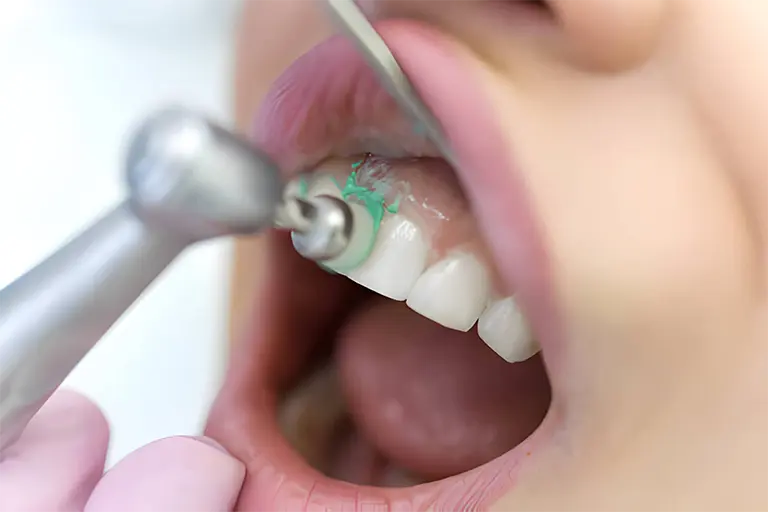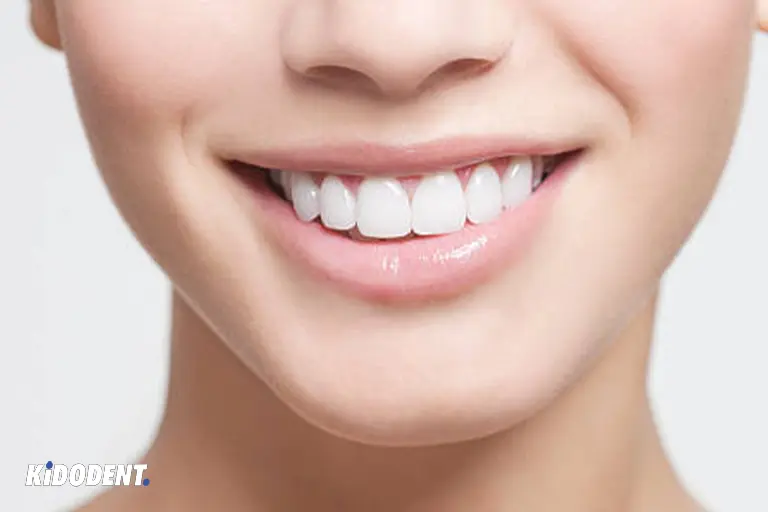What is composite bonding?
Composite bonding, or dental bonding, is a procedure in which the dentist restores fractured, chipped, spaced, and discolored teeth by using a tooth-colored composite resin material.
How bonding improves your smile?
Composite dental bonding is an attractive choice for most people who want to have their smile transformed in many ways. So, if you have gapped, misaligned, chipped, and stained teeth, it is good to know that this method of tooth restoration is a dentist-approved, popular, and cost-effective solution for you.
Composite bonding is used as composite veneers to treat and cover:
- Crooked, irregular, and misshapen teeth
- Stained and discolored teeth
- Small gaps between the teeth
It is also an esthetic material in the composite filling to repair and restore minor-to-moderate forms of:
- Broken, chipped, and cracked teeth
- Teeth affected by cavities and tooth decay

5 things you should know about composite dental bonding
- Treatment is less invasive and pain-free
-
Dental bonding requires less or no tooth preparation to be bonded on your natural teeth. As the name, the composite resin material is bonded in a non-invasive procedure over your teeth. Except for special cases like treating deep cavities in composite fillings, no anesthesia is needed. Compared to porcelain veneers, which part of the enamel should be drilled down, you don’t need enamel removal in most cases for composite. It only requires roughening the tooth surface for better adhesion.
- Composite bonding is cheaper and can be repaired easier
-
Looking for a budget-friendly and cost-effective option, get composite to make your smile glow. The price of composite is much more affordable in relation to other cosmetic treatments, $300 to $500 per tooth. Plus, bonded teeth are easier to repair, which can reduce your cost of replacement or repair in the long run.
- Composite bonding is less durable than veneer
-
If you are looking for a long-lasting smile makeover treatment, porcelain veneer or, when necessary, dental crowns are better options. Since porcelain veneers is made up of ceramic-based material (porcelain), it tends to withstand more pressures from either chewing or other forces on your teeth. This makes veneers more durable, which can last 10 to 20 years with good care.
The lifespan of composite dental bonding, on the other hand, is between 5 to 8 years. It is not as pressure-resistant as veneers. Plus, it is not a good option for people with teeth grinding habits or bruxism due to higher risks of breakage and chipping.
- Composite bonding can stain over time
-
Composite bonding is made from resin matrix, silane, and inorganic filler materials like quartz and glass, thus making it susceptible to color change. Teeth bonding absorbs stains, so it can create contrast between the natural color of your teeth. In addition, teeth whitening products and treatments cannot whiten your bonded teeth. Because of this, dentists will perform professional teeth whitening before your procedure.
With this in mind, you should avoid highly pigmented and teeth-discoloring drinks like wine, tea, or coffee after bonded teeth treatment is done.
- Highly effective but not for everyone
-
Composite dental bonding is the treatment of choice when it comes to reshaping minor crooked teeth, closing the gaps between teeth, covering stained teeth, and for fillings in less complex cavities.
But if you have any major teeth imperfections like severely misshapen teeth or bite issues, opt for orthodontic treatment with braces or Invisalign. Also, in the restoration of more serious worn-down teeth, a dental crown comes as excellent treatment.
How to care for bonded teeth?
Once you have your teeth bonded, you need to take some precautions as well as have a routine oral hygiene program.
- Brush your teeth with fluoride toothpaste twice a day, and floss gently to prevent daily plaque accumulation on and between the teeth.
- Limit your sugar intake, and avoid smoking. Cut down on high pigmented drinks and foods like coffee, tea, and other faster stain-causing substances.
- Nail-biting, teeth grinding, chewing on pencils, or biting on hard foods, fruits, and vegetables can cause your composite to chip, so avoid that.
- Wear a mouthguard or night guard as recommended to protect your teeth against unwanted teeth grinding or bruxism.
- And finally, visit your dentist regularly every six months for thorough dental check-ups and professional teeth cleaning treatments.
Frequently asked questions around composite bonding
Bonding is a broader term that refers to the dental procedures requiring the system of composite adhesives. While composite can include restorations like fillings, composite veneer only refers to the dental treatment with composite dental bonding which is done to the front surface of teeth.
No, it doesn’t have any major risks to your teeth or health. It is simply a material bonded to your natural teeth in a mostly non-invasive procedure. Part of your enamel can be roughened and removed in some cases, but it doesn’t make the treatment an irreversible one entirely.
Unlike veneer and crown which an extensive amount of enamel and dentin should be removed to make room for the restoration, in composite, you don’t have that drilling and natural tooth removal. Instead, the material is shaped and polished until a perfect result is achieved. All is usually done in a single visit.
No, you can’t. Composite resin dental does not respond to teeth whitening treatments and products.
